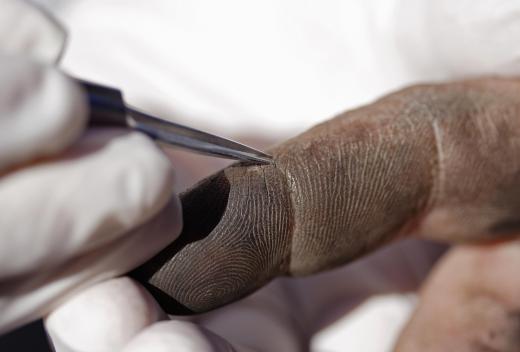A tweezer tool is something used to pick things up or out of something. It is essentially the same as the tweezers that people use for plucking eyebrow hairs or removing splinters, and the term could technically apply to those tweezers as well. Adding the word “tool,” however, implies that the tweezers are meant to be a part of some sort of crafting process. The general category of tweezer tools also covers forceps.
The physical makeup of this type of tool is more varied than that of cosmetic tweezers. Cosmetic tweezers either have two mirror-image halves that are connected at one end, or they are one long piece of material, generally metal, that is bent in the middle. Most of these tools are also like this, except they can also be combined with other tools so that the tweezer edges are on one end, and another tool, such as a magnifying glass or bonsai rake, is on the other. Both cosmetic tweezers and tweezer tools can be made of metal, plastic and other materials, but metal is a more common material for cosmetic tweezers. These tools tend to be made of metal, too, but plastic tweezer tools are a little more numerous than plastic cosmetic tweezers.

The edges of the tool may be pointed or angled like those of cosmetic tweezers, or they may have a bent-nose shape. The crook of the tweezer tool’s elbow can have a light to assist users in seeing what they are picking up. It may be attached to a stand as a “third hand” tool for beading and soldering. The user would place an item in the tweezer tool while soldering or gluing something to the item.

One advanced type of tweezer tool is an optical tweezer. These are not made of a solid material like metal but are instead beams of light that grasp microscopic particles like atoms. Instead of squeezing the item between the two sides of the tool, the beams radiate pressure that holds onto the particles.
The term “tweezer tool” may also refer to the “O’Connor Tweezer Dexterity Test,” a hand-eye coordination skills test given to potential assistants for hair transplant or restoration procedures. The applicant has to insert 100 pins in a board. Scoring depends on how quickly and accurately the applicant is able to do this. The purpose of the test is to distinguish between those applicants suited for the painstaking work and those who lack the patience to deal with the tedium of each procedure.
